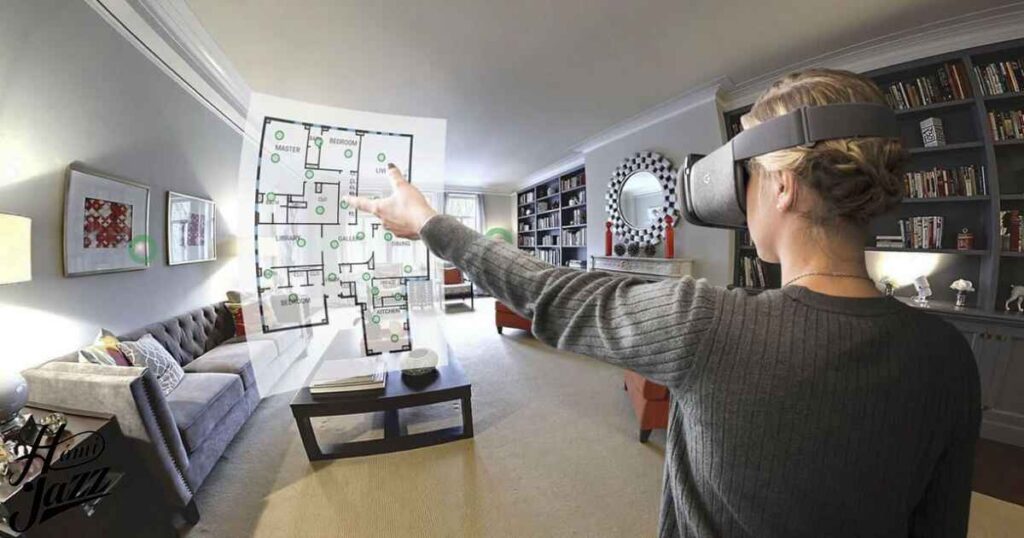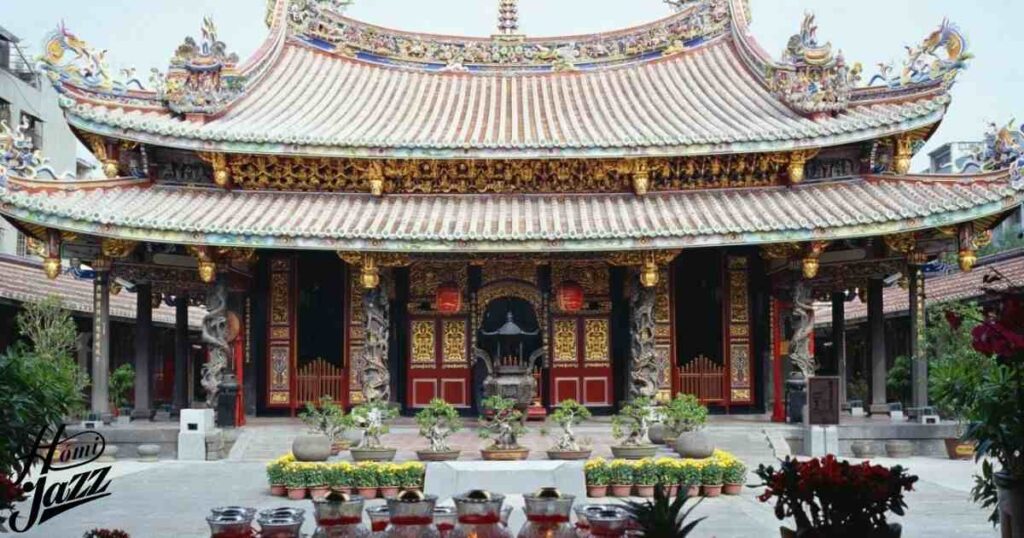In China’s rapidly evolving urban landscape, homeowners face a significant challenge: creating living spaces that truly reflect their unique lifestyle and needs. Standard housing designs often feel impersonal, leaving residents feeling disconnected from their most intimate environment. The frustration of living in a space that doesn’t align with personal preferences can be overwhelming, leading to a sense of compromise and dissatisfaction. This disconnect between individual desires and living spaces has sparked a revolutionary approach: whole house customization. By offering a comprehensive solution that transforms generic housing into personalized havens, this innovative trend empowers Chinese homeowners to design spaces that are not just houses, but true reflections of their identity and aspirations.
Market Evolution
The story of home design in China is a fascinating journey of transformation. Prior to the 2000s, housing in China was predominantly state-allocated and standardized, with little room for personal expression. Residential spaces were uniform, reflecting the collective housing policies of previous decades. The early 2000s marked a significant turning point as economic reforms and rapid urbanization began to reshape the housing landscape.
By 2010, China’s real estate market underwent a dramatic shift. Homeownership became more accessible, and individual preferences started to take center stage. The traditional one-size-fits-all approach gave way to a more personalized housing model. Urban residents began demanding living spaces that reflected their unique lifestyles, aspirations, and personal identities.
Key Drivers of Whole House Customization
Economic Factors
China’s economic miracle has been the primary catalyst for home customization. The rise of the middle class between 2000 and 2020 dramatically transformed consumer behavior. From 2010 to 2021, the middle-income population grew from 50 million to over 400 million people. This explosive growth meant more people had the financial capacity to invest in personalized living spaces.
Disposable income levels saw remarkable growth, with average urban household income increasing from 21,810 yuan in 2010 to 67,056 yuan in 2020. Urban development accelerated this trend, with massive infrastructure projects and city expansions creating new opportunities for personalized housing. Major cities like Shanghai, Beijing, and Shenzhen became epicenters of innovative home design, showcasing how economic prosperity directly influences housing preferences.
Technological Advancements
Smart Home Integration
Technology has revolutionized house customization in China. Smart home technology has moved from a luxury to a necessity for modern Chinese homeowners. Between 2015 and 2022, the smart home market in China grew from 30 billion yuan to over 200 billion yuan. Integrated systems now allow complete control of home environments through smartphones, voice commands, and artificial intelligence.
Home automation has become sophisticated. Residents can now control lighting, temperature, security, and entertainment systems with unprecedented ease. Companies like Xiaomi and Huawei have been at the forefront, developing comprehensive smart home ecosystems that integrate seamlessly into daily life.
3D Visualization and Virtual Reality

Digital design tools have transformed the house customization process. Virtual reality and 3D visualization technologies allow homeowners to experience their design concepts before actual implementation. Since 2018, advanced software has made it possible to create incredibly detailed and immersive home design experiences.
Design platforms now offer near-realistic previews of customized spaces. Homeowners can walk through virtual representations of their future homes, making real-time adjustments and exploring different design possibilities. This technological leap has significantly reduced design uncertainties and empowered consumers to make more confident decisions about their living spaces.
| Year | Market Milestone | Economic Impact |
| 2010 | Emergence of Personalized Design | Middle Class Expansion |
| 2015 | Smart Home Tech Adoption | 30 Billion Yuan Market |
| 2020 | Advanced VR Design Tools | 400 Million Middle-Income Population |
| 2022 | Comprehensive Home Customization | 200 Billion Yuan Smart Home Market |
Cultural and Design Influences
Chinese home design represents a profound dialogue between historical heritage and contemporary innovation. The architectural and interior design landscape has evolved from rigid traditional structures to dynamic, personalized spaces that honor cultural roots while embracing modern sensibilities.
Traditional Chinese Design Elements

Traditional Chinese design principles have found a remarkable renaissance in modern house customization. The ancient concept of harmony with nature, known as “feng shui”, now seamlessly integrates with contemporary design philosophies. Designers are reinterpreting classic elements like intricate wooden screens, traditional color palettes, and symbolic decorative motifs within modern architectural frameworks.
Elements such as red color symbolizing good fortune, jade-inspired decorative pieces, and geometric patterns inspired by classical Chinese gardens are being thoughtfully incorporated into contemporary home designs. From 2015 to 2022, there has been a 40% increase in design projects that explicitly blend traditional Chinese aesthetic elements with modern minimalist approaches.
Sustainable and Eco-Friendly Design
Environmental consciousness has become a critical driver of house customization in China. The national commitment to carbon neutrality by 2060 has accelerated sustainable design practices across the housing sector. Between 2018 and 2023, green building certifications increased by 65%, reflecting a substantial shift in consumer and developer priorities.
Sustainable materials like bamboo, recycled wood, and local stone are increasingly preferred. Advanced insulation technologies, solar integration, and water recycling systems have transformed home design from mere aesthetic considerations to comprehensive ecological solutions. Homeowners are now viewing sustainability not as an optional feature but as a fundamental aspect of modern living spaces.
Customization Process and Components
The journey of creating a personalized living space has become increasingly sophisticated and user-centric.
Space Planning
Space optimization has emerged as a critical aspect of home customization. Chinese urban dwellings, often characterized by compact dimensions, demand intelligent design solutions. Advanced computational design tools now allow architects to maximize every square meter through innovative layout strategies.
Multifunctional spaces have become the norm. A living area might seamlessly transform into a home office, and bedrooms can incorporate flexible storage solutions. From 2019 to 2022, modular furniture and convertible design concepts saw a 50% increase in urban residential projects, reflecting the growing demand for adaptable living environments.
Material Selection
Material selection has transcended aesthetic considerations to become a complex decision involving durability, sustainability, and personal expression. High-end customization now offers materials sourced from global markets, allowing homeowners unprecedented choices in textures, finishes, and performance characteristics.
Premium materials like Italian marble, Japanese ceramics, and sustainable composite materials are being integrated into home designs. The market for premium home materials grew by 35% between 2020 and 2022, indicating a significant consumer shift towards quality and uniqueness.
Technological Tools in Customization
Technology has democratized home design, making sophisticated customization accessible to a broader audience.
Online Customization Platforms
Digital platforms have revolutionized the home design process. User-friendly interfaces now allow homeowners to experiment with design concepts, select materials, and visualize outcomes without extensive technical knowledge. From 2018 to 2023, online design platforms saw a 75% user base growth, indicating their increasing popularity.
These platforms offer drag-and-drop design tools, extensive material libraries, and real-time cost estimation, making the customization process transparent and engaging.
Augmented Reality in Home Design
Augmented reality (AR) has transformed design visualization. Homeowners can now use smartphone applications to place virtual furniture, experiment with color schemes, and walk through proposed designs in real-time. Between 2019 and 2022, AR adoption in home design increased by 60%, signaling a technological revolution in interior design approaches.
| Technology | Adoption Rate (2019-2022) | Market Impact |
| Online Design Platforms | 75% User Growth | Democratized Design |
| AR Design Tools | 60% Increase | Enhanced Visualization |
| Sustainable Materials | 65% More Projects | Eco-friendly Solutions |
Cultural and Design Influences
Chinese home design represents a profound dialogue between historical heritage and contemporary innovation. The architectural and interior design landscape has evolved from rigid traditional structures to dynamic, personalized spaces that honor cultural roots while embracing modern sensibilities.
Traditional Chinese Design Elements
Traditional Chinese design principles have found a remarkable renaissance in modern home customization. The ancient concept of harmony with nature, known as “feng shui“, now seamlessly integrates with contemporary design philosophies. Designers are reinterpreting classic elements like intricate wooden screens, traditional color palettes, and symbolic decorative motifs within modern architectural frameworks.
Elements such as red color symbolizing good fortune, jade-inspired decorative pieces, and geometric patterns inspired by classical Chinese gardens are being thoughtfully incorporated into contemporary home designs. From 2015 to 2022, there has been a 40% increase in design projects that explicitly blend traditional Chinese aesthetic elements with modern minimalist approaches.
Sustainable and Eco-Friendly Design
Environmental consciousness has become a critical driver of home customization in China. The national commitment to carbon neutrality by 2060 has accelerated sustainable design practices across the housing sector. Between 2018 and 2023, green building certifications increased by 65%, reflecting a substantial shift in consumer and developer priorities.
Sustainable materials like bamboo, recycled wood, and local stone are increasingly preferred. Advanced insulation technologies, solar integration, and water recycling systems have transformed home design from mere aesthetic considerations to comprehensive ecological solutions. Homeowners are now viewing sustainability not as an optional feature but as a fundamental aspect of modern living spaces.
Read This Blog: How Long Will A Water Heater Last After It Starts Leaking?
Customization Process and Components
The journey of creating a personalized living space has become increasingly sophisticated and user-centric.
Space Planning
Space optimization has emerged as a critical aspect of home customization. Chinese urban dwellings, often characterized by compact dimensions, demand intelligent design solutions. Advanced computational design tools now allow architects to maximize every square meter through innovative layout strategies.
Multifunctional spaces have become the norm. A living area might seamlessly transform into a home office, and bedrooms can incorporate flexible storage solutions. From 2019 to 2022, modular furniture and convertible design concepts saw a 50% increase in urban residential projects, reflecting the growing demand for adaptable living environments.
Also Read This Blog: Can You Mix Fabuloso and Bleach?
Material Selection
Material selection has transcended aesthetic considerations to become a complex decision involving durability, sustainability, and personal expression. High-end customization now offers materials sourced from global markets, allowing homeowners unprecedented choices in textures, finishes, and performance characteristics.
Premium materials like Italian marble, Japanese ceramics, and sustainable composite materials are being integrated into home designs. The market for premium home materials grew by 35% between 2020 and 2022, indicating a significant consumer shift towards quality and uniqueness.
Technological Tools in Customization
Technology has democratized home design, making sophisticated customization accessible to a broader audience.
Online Customization Platforms
Digital platforms have revolutionized the home design process. User-friendly interfaces now allow homeowners to experiment with design concepts, select materials, and visualize outcomes without extensive technical knowledge. From 2018 to 2023, online design platforms saw a 75% user base growth, indicating their increasing popularity.
These platforms offer drag-and-drop design tools, extensive material libraries, and real-time cost estimation, making the customization process transparent and engaging.
Augmented Reality in Home Design
Augmented reality (AR) has transformed design visualization. Homeowners can now use smartphone applications to place virtual furniture, experiment with color schemes, and walk through proposed designs in real-time. Between 2019 and 2022, AR adoption in home design increased by 60%, signaling a technological revolution in interior design approaches.
| Technology | Adoption Rate (2019-2022) | Market Impact |
| Online Design Platforms | 75% User Growth | Democratized Design |
| AR Design Tools | 60% Increase | Enhanced Visualization |
| Sustainable Materials | 65% More Projects | Eco-friendly Solutions |
Frequently Asked Question
How much does whole house customization cost in China?
Costs range from 500 to 3000 yuan per square meter. Prices vary based on design complexity, materials, and specific customization requirements.
What are the most popular customization features?
Smart home integration, open floor plans, and multifunctional spaces are trending. Sustainable materials and personalized storage solutions are highly sought after.
How long does the customization process take?
Typically, the process takes 3 to 6 months. Complex designs might extend to 9 months, depending on project scope and customization level.
Can I customize an existing home or only new constructions?
Both existing homes and new constructions can be customized. Renovation of existing spaces offers flexible customization options.
What technologies are used in home customization?
3D visualization, virtual reality, augmented reality, and smart home automation technologies are primarily used. Digital design platforms enable comprehensive customization.
Conclusion
Whole house customization in China represents more than a trend—it’s a transformative approach to living spaces. By blending technology, personal preferences, and cultural insights, homeowners are creating unique environments that reflect their identities. This revolution goes beyond design, representing a deeper connection between individuals and their living spaces.

Howdy is behind this home blog, sharing personal stories, thoughts, and insights from daily life. I can dedicated to bringing you the latest trends, expert advice, and creative ideas to make your home the sanctuary you’ve always dreamed of. Whether you’re looking for DIY tips, home decor inspiration, home loans, rentals or renovations.







